Jordan Wright
November 4, 2019
Wolfgang Amadeus Mozart wrote his final opera, The Magic Flute, in his later years after he had joined the Rationalist faction of the Freemasons known as the Illuminati who held differing views on society’s rank. In this romantic tale, a dragon must be slain – this one’s a fire-breathing, glowing-eyed monster – a princess with a heartless mother must be rescued from the evil clutches of a sexual predator, and harmony shall reign through the brotherhood of man. This humanist theme reflects the particular Masonic ethos which holds that nobility of the spirit was not defined by noble rank. Very democratic.
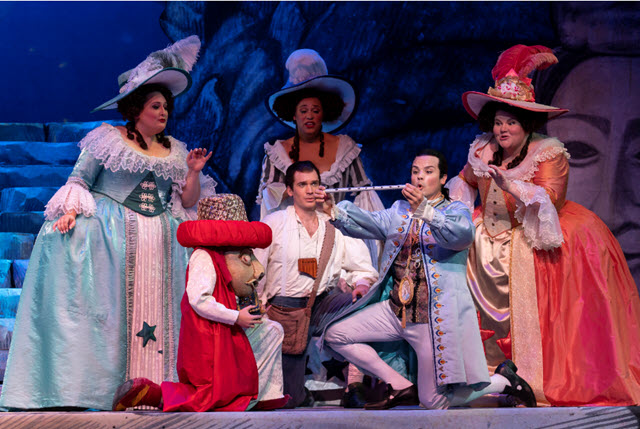
(l-r) Alexandria Shiner (1st Lady), Deborah Nansteel (2nd Lady), Meredith Arwady (3rd Lady),Michael Adams (Papageno), David Portillo (Tamino) in WNO’s The Magic Flute. Photo credit by ScottSuchman
Incorporating vibrant themes of exotic Egyptian iconography with Freemasonry symbolism, the opera depicts a universal lesson in morality, unity and kindness. And if all that sounds unusually weighty Emanuel Schikaneder’s libretto is the stuff of classic fairy tales.
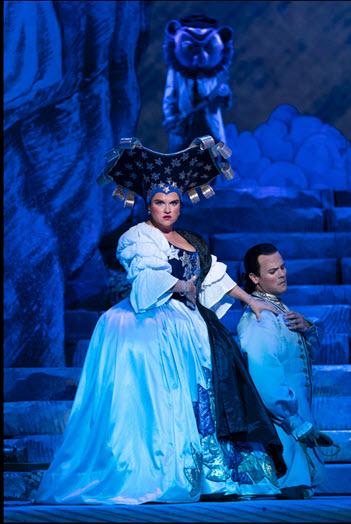
Kathryn Lewek (Queen of the Night), David Portillo (Tamino)in the WNO’s The Magic Flute. Photo credit by Scott Suchman
The eye candy comes from the genius of children’s book writer and illustrator Maurice Sendak who designed both costumes and scenery. Using a layered construction of fourteen entirely different sets involving wings, borders, flats and colored cloths that draw the eye into an ever-deeper perspective, the scenery is wonderfully whimsical and darkly haunting – think children’s pop up books which, according to Sendak’s friend and collaborator, Neil Peter Jampolis, is exactly the look Sendak was aiming for.
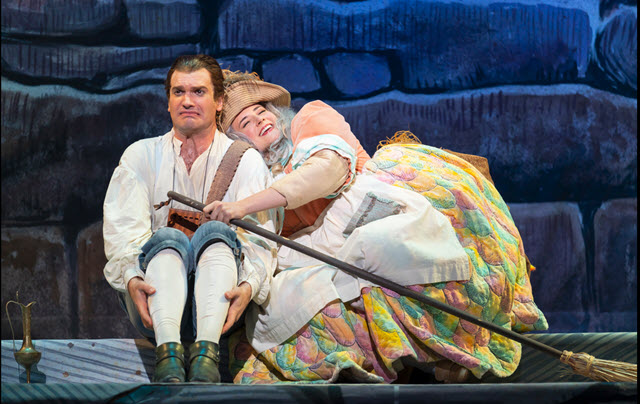
Michael Adams (Papageno), Alexandra Nowakowski (Papagena) in The WNO’s The Magic Flute. Photo credit by Scot tSuchman
It was discovered that the original sets had deteriorated. So, how would these old sets be replicated? Enter veteran set designer Jampolis who digitized the designs from Sendak’s original drawings. What a treat for new audiences! since it affords us the thrill of imagining we are time-warped to 1980 when the Houston Grand Opera initially commissioned Sendak. Fusing the neo-classical of the 18th century with pure folly, Sendak gives us a mashup of temples and palm trees coexisting with wild animals, Corinthian columns and sphinxes.
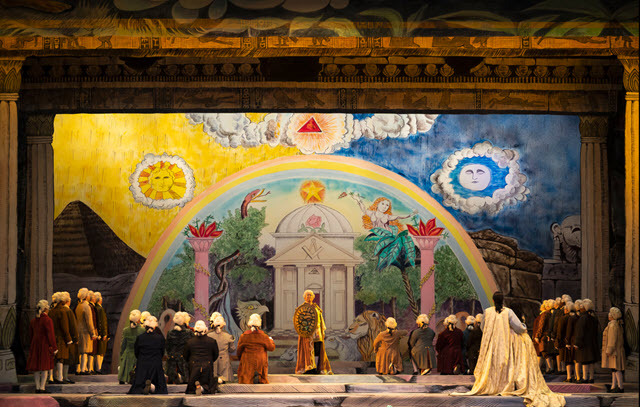
The Washington National Opera presents The Magic Flute. Photo credit by Scott Suchman
Masonic elements are everywhere. Look for the clues. From the Golden Mean compass half-hidden behind a massive rock, to the aprons and blindfolds used in Masonic rituals. Sendak didn’t miss a single beat. The splendid costumes range from dreamy fairy tale to British Colonials in perukes and britches meeting in secret ceremonies with blindfolded acolytes. It’s pure science fiction, if you think about it.
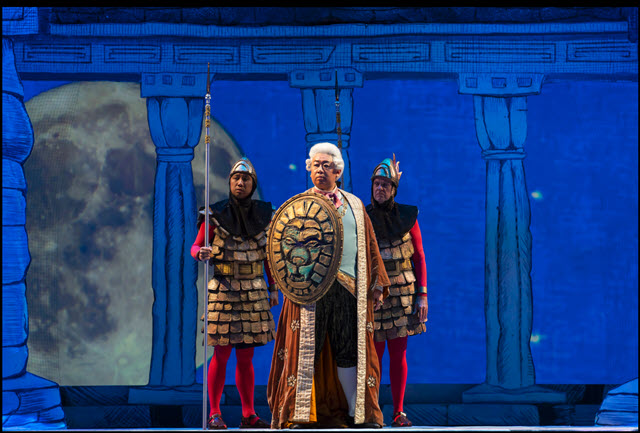
Wei Wu (Sarastro), Alexander McKissick (1st Armed Man), Samuel J. Weiser (2nd Armed Man) in WNO’s The Magic Flute. Photo credit by Scott Suchman
A collection of magnificent voices brings this can’t-miss production to a crescendo. The golden genies – three local youngsters whose harmonies are positively angelic, the breathtaking diva Kathryn Lewek who proves that three-plus octaves in her second act aria is no sweat, and the good looks and athleticism of Michael Adams as Papageno and tenor David Portillo as Tamino, are the icing on this delicious multi-tiered cake. David Cangelosi as Monostatos shows his comic timing and brazen silliness is spot on, most especially in a scene with a bare-breasted statue and I was taken by surprise by the lovely voiced Alexandra Nowakowski as Papagena.
Don’t miss this full-throttle two-acter singspiel. It’s epic!
Also featuring Sydney Mancasola as Pamina, Kathryn Lewek as Queen of the Night and the powerful bass, Wei Wu, who reminded me of Bert Lahr in The Wizard of Oz, as the evil Sarastro.
Conducted by Eun Sun Kim, directed by Christopher Mattaliano, Set Design and Lighting by Neil Peter Jampolis with the Washington National Opera Orchestra and the Washington National Opera Chorus.
Performances are as follows: November 6, 9, 12, 15, 17 (matinee only) & 23.
At the at the John F. Kennedy Center for the Performing Arts, 2700 F St., NW, Washington, DC. For tickets and information call 202 467-4600 or visit www.Kennedy-Center.org.